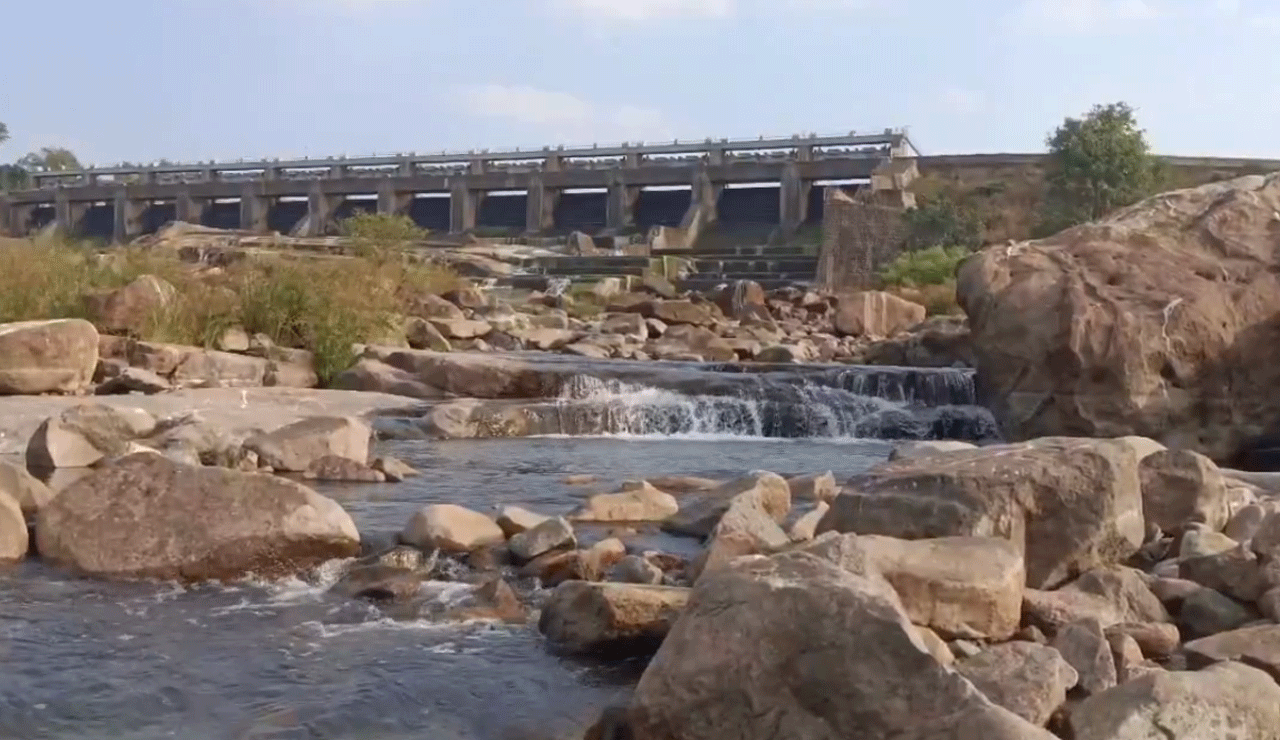Telangana Acts Fast: Nizamsagar Reservoir Water Released for Municipal Use
To address the growing drinking water crisis in Nizamabad, Bodhan, and Banswada, the Irrigation Department has released 1,200 cusecs of water from the Nizamsagar Project.

Nizamabad: To address the growing drinking water crisis in Nizamabad, Bodhan, and Banswada, the Irrigation Department has released 1,200 cusecs of water from the Nizamsagar Project. Officials acted swiftly following a drop in water levels at local reservoirs, which had previously sufficed for daily consumption needs.
Table of Contents
0.35 TMC Water Released From Current 6.032 TMC Storage
The Nizamsagar Project, with a gross storage capacity of 17.802 TMC ft, currently holds 6.032 TMC ft of water. As per the plan, around 0.35 TMC ft of water is being released into downstream reservoirs, including the Alisagar reservoir, to support towns such as Bodhan and Banswada.
The water is being directed through the main canal to reach municipal water bodies, which serve as critical drinking water sources for these regions.
Also Read: Hyderabad Parents Raise Alarm After Drunk School Bus Drivers Caught in Surprise Checks
Farmers Await Irrigation Water as Rainfall Improves Inflows
While the current focus remains on drinking water supply, farmers in the Nizamsagar command area are eagerly awaiting water releases for agricultural irrigation. Thanks to recent rainfall in the catchment areas, inflows into the Nizamsagar reservoir have shown slight improvement, offering hope for future irrigation support.
Authorities Maintain Vigil to Prevent Illegal Diversion of Water
To prevent unauthorized diversion of water, officials from the irrigation, revenue, and police departments are jointly monitoring the situation. Water will be released for three days from the hydel power generation outlet into the main canal. Strict surveillance is in place across distributary canals in Nizamabad and Kamareddy districts.
Coordinated Action Ensures Water Reaches Intended Beneficiaries
Elected representatives and district officials are working together to ensure the uninterrupted and fair distribution of water for drinking purposes. Their coordinated approach aims to provide relief to the affected towns while managing the limited reservoir resources cautiously.
